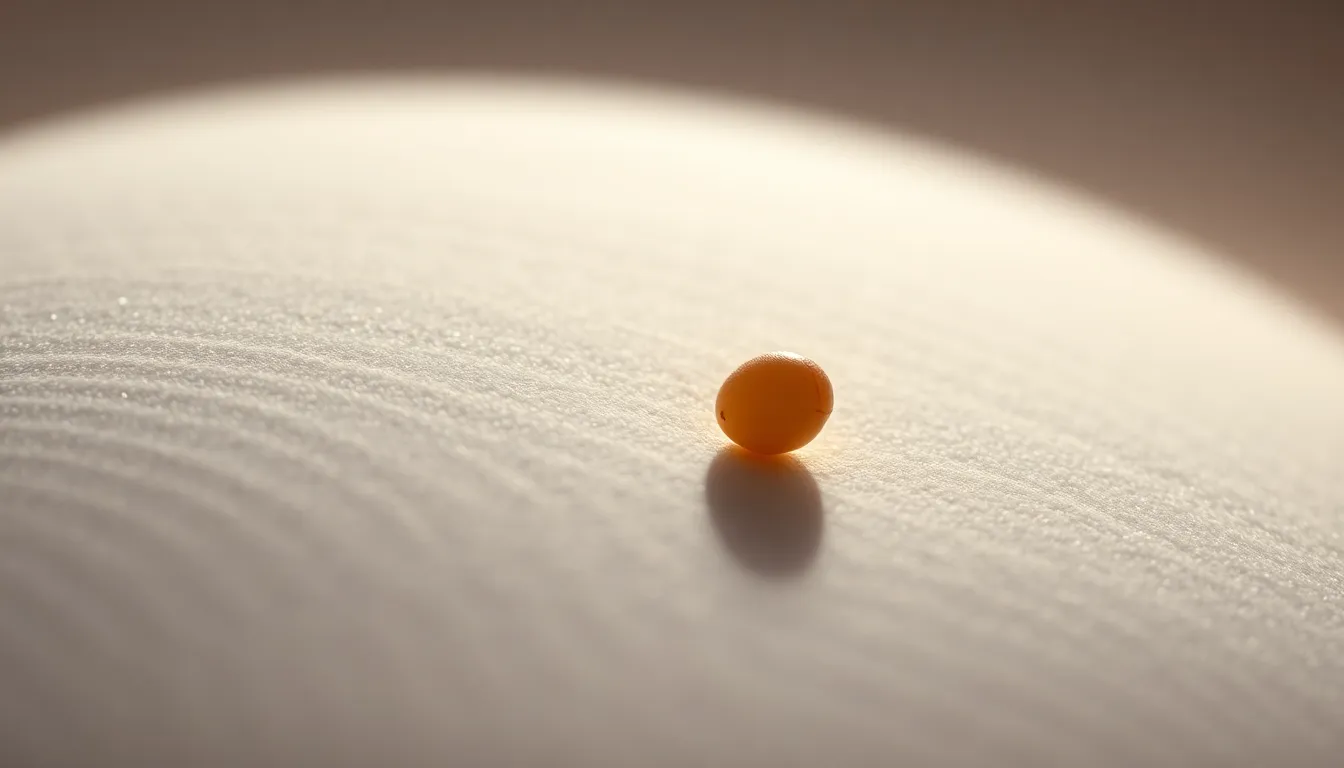At just five weeks, a baby is about the size of a sesame seed. Yes, you read that right—a tiny, minuscule sesame seed! While it might not seem like much, this little nugget is already hard at work, developing rapidly and preparing for the grand debut into the world. Parents might be wondering how something so small can create such a big impact, but trust us, it’s all happening behind the scenes.
Table of Contents
ToggleOverview of Baby Development at 5 Weeks
At five weeks, the baby measures about 1.5 to 2 millimeters in size, roughly equivalent to a sesame seed. This tiny embryo experiences rapid growth, with critical developments occurring in various systems. Cells are multiplying quickly, forming the foundations for the brain, spinal cord, and heart.
Heart development begins during this week. A small tube starts to form, which will eventually evolve into a fully functioning heart. This essential organ begins to pump blood, improving circulation and supporting further growth.
Development of the neural tube is also crucial at this stage. This structure will later become the baby’s brain and spinal cord. The cells that will differentiate into the nervous system already start to organize, laying the groundwork for future cognitive and physical functions.
Additionally, the placenta and umbilical cord form during this period. These structures facilitate nutrient and oxygen transfer, ensuring the baby receives essential resources from the mother. The connection between mother and baby becomes vital for support and development as pregnancy progresses.
Early signs of pregnancy may also become noticeable for the mother. Symptoms like fatigue, nausea, and breast tenderness can arise as hormone levels adjust. This marks the beginning of significant changes in the mother’s body, reflecting the new life growing within.
Throughout this exciting week, multiple processes occur simultaneously. Each plays a part in shaping the baby’s future growth and development, demonstrating the complexity and wonder of early pregnancy.
Size of Baby at 5 Weeks

At five weeks gestation, the baby measures about 1.5 to 2 millimeters. This early stage marks significant growth and development as various systems begin to form.
Measurements and Growth
The baby undergoes rapid changes during this week. Growth occurs at an impressive rate, laying the foundation for future milestones. Cell division accelerates, contributing to the formation of critical organs. By focusing on early development, the body starts to differentiate between specialized cells. These measurements reflect the remarkable transformation from a single cell into a budding embryo.
Comparing Size to Common Objects
At this stage, the baby’s size is comparable to a sesame seed. This small size emphasizes the incredible complexity of development happening within. Much like a tiny dot, the embryo lays the groundwork for all major systems. In the grand scheme of pregnancy, this initial size might seem diminutive, yet it serves as a crucial starting point for growth. Even while tiny, this developing embryo begins to establish vital connections with the mother.
Factors Influencing Baby Size
Several factors impact the size of a baby at five weeks gestation. Understanding these factors can provide insight into early development.
Genetics
Genetic makeup plays a crucial role in determining the baby’s size. Each parent contributes genetic material influencing growth patterns. Variations in genes can lead to differences in size, as some families may have larger or smaller babies. Additionally, health conditions linked to genetics may also affect fetal growth. These genetic factors interact with other influences to shape the baby’s development trajectory.
Maternal Health
Maternal health significantly influences the growth of the baby. Health issues like diabetes, hypertension, or nutritional deficiencies can hinder fetal size and development. Proper maternal nutrition is vital; a balanced diet rich in essential vitamins and minerals supports growth. Regular prenatal care helps monitor maternal health and fetal development, identifying any potential concerns early. Emotional well-being also contributes, as chronic stress may adversely affect growth. The mother’s overall health creates the environment essential for fostering optimal growth during this crucial period.
What to Expect During This Week
During this week, the baby measures about 1.5 to 2 millimeters. The size is comparable to a sesame seed. Rapid growth marks the beginning of significant development in various systems. Brain formation begins, along with the spinal cord and heart. Heart development starts with a small tube, which will evolve into a fully functioning organ. Blood circulation initiates, supporting the baby’s growth.
As the neural tube forms, it lays the groundwork for cognitive and physical functions. Changes in the mother’s body also become noticeable. Fatigue, nausea, and breast tenderness signal hormonal adjustments. Each sign reflects the new life developing within. Moreover, the placenta and umbilical cord form, facilitating nutrient and oxygen transfer.
Factors influencing the baby’s size this week include genetics and maternal health. Genetic makeup from both parents affects growth patterns. Variations lead to differences in size, showcasing unique development. Maternal health plays a crucial role in fetal development. Conditions like diabetes can hinder progress. Proper nutrition and regular prenatal care support optimal growth. Each nutrient consumed contributes to the baby’s development.
Expect emotional well-being to influence growth as well. The interplay of these factors plays an essential role during this critical period. Celebrations of every small change add to the journey of pregnancy. Notably, the embryo starts establishing vital connections with the mother. Understanding these developmental milestones provides insight into early pregnancy’s complexity.
At five weeks gestation the baby is undergoing remarkable changes despite its tiny size. This early stage marks the beginning of crucial developments that will shape its future growth and health. As the neural tube forms and the heart begins to develop the foundations for life are being laid.
For mothers this period brings noticeable changes as their bodies adapt to support the growing embryo. Understanding these early milestones can help parents appreciate the complexity of pregnancy. Maintaining a healthy lifestyle and seeking regular prenatal care are essential for fostering optimal growth during this critical time. Each small step in development is a testament to the incredible journey of bringing new life into the world.








